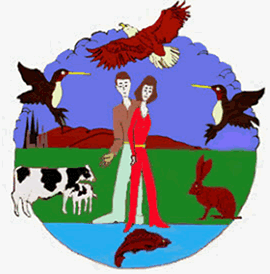
"Published Occasionally at Irregular Intervals"
~ Dr.
Arthur L. Craigmill ~
Extension
Toxicologist

We have been receiving a lot of calls related to the use of pesticides to control adult mosquitoes in California to mitigate the spread of West Nile Virus (WNV). There are a lot of excellent web-based resources available, and this special edition of the newsletter presents some of the best for your consideration. Our last newsletter contained a link to a recent Center for Disease Control Study looking at human exposure to adult mosquito control pesticides (adulticides). This link is included again as it contains some of the most recent and useful human exposure data.
California public health officials consider the risks associated with the use of mosquito adulticides to be far less than the risks of WNV, and thus the benefits of mosquito control far outweigh the potential risks. Opponents to adulticide use do not agree and some believe that the pesticides are more risky than WNV. The data available support the public health officials decision. There have been documented human deaths directly attributable to WNV in California and throughout the USA, and many horses and birds have died as well as a result of infection. Deaths attributable to the pesticides used to control mosquitoes have not been documented, yet some opponents still believe that the pesticides used to control mosquitoes are more risky than WNV.
In my experience, no amount of data will convince some people that pesticide use may be beneficial or safe for any purpose, as they have already made up their minds and will not consider new evidence or input. Public health officials however, must make their decisions based on evidence, and the current evidence supports their decision to use adulticides. To paraphrase Abraham Lincoln: "You can please all the people some of the time, and some of the people all the time, but you cannot please all the people all the time." Our public health officials have the serious responsibility to attempt to protect all of us, all of the time (whether we want to be protected or not) and to do so based on critical examination of available evidence and risk analysis. In this situation, with the evidence they have to consider, I don't see how they could come to any other conclusion.
--- Art Craigmill


Public health officials weigh the risk for
mosquito-borne diseases
against the risk for human exposure to pesticides sprayed to control
mosquitoes. Response to outbreaks of mosquito-borne diseases
has focused on vector control through habitat reduction and application
of pesticides that kill mosquito larvae. However, in certain
situations, public health officials control adult mosquito populations
by spraying ultra-low volume (ULV) (<3 fluid ounces per acre
[oz/acre]) mosquito-control (MC) pesticides, such as naled, permethrin,
and d-phenothrin. These ULV applications generate aerosols of fine
droplets of pesticides that stay aloft and kill mosquitoes on contact
while minimizing the risk for exposure to persons, wildlife, and the
environment. This report summarizes the results of studies
in Mississippi, North Carolina, and Virginia that assessed human
exposure to ULV naled, permethrin, and d-phenothrin used in emergency,
large-scale MC activities. The findings indicated ULV application in MC
activities did not result in substantial pesticide exposure to humans;
however, public health interventions should focus on the reduction of
home and workplace exposure to pesticides.
REF: MMWR June 3, 2005 / 54(21);529-532.

The National Pesticide Information Center (NPIC) is a cooperative effort of the United States Environmental Protection Agency (EPA) and Oregon State University. NPIC is a service that provides objective, science-based information on pesticides. NPIC developed "NPIC's West Nile Virus Resource Guide" as a source of available information on the West Nile virus and pesticide related topics.
Editorial Note: In my opinion, this website has just about everything you could possibly ask about with respect to pesticide use for control of WNV. This is the place to start.
REF: NPIC website


Picaridin is a relatively new mosquito repellent
which was recently approved for use in California. The following link
is to the EPA website with registration information about picaridin
which may be useful. REF: EPA
May 2005
DEET (Diethyltoluamide) is the "standard"
repellent which has been in use for many years. EPA recently issued a
Reregistration Eligibility Decision (RED) for the chemical DEET. After
completing a comprehensive re-assessment of DEET, EPA concluded that,
as long as consumers follow label directions and take proper
precautions, insect repellents containing DEET do not present a health
concern. Human exposure is expected to be brief, and long-term exposure
is not expected. Based on extensive toxicity testing, the Agency
believes that the normal use of DEET
does not present a health concern to the general population. REF: EPA Website

